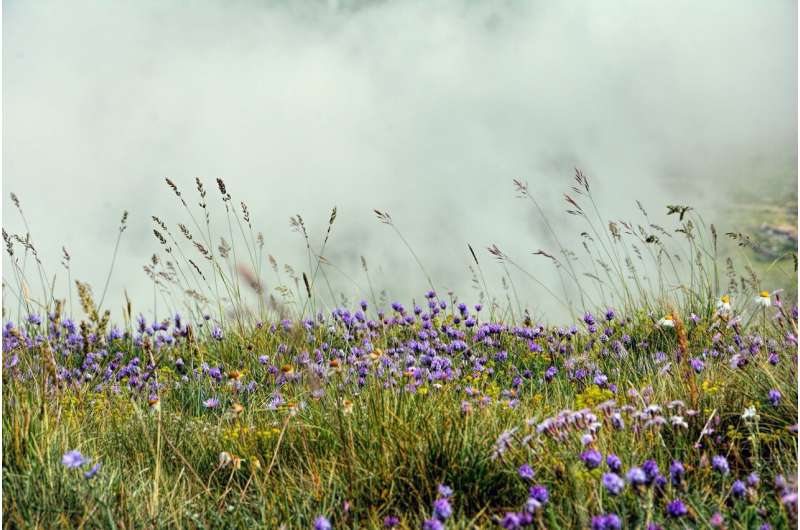Discover how researchers are using threatened grassland species to establish beautiful and biodiverse urban wildflower meadows, bringing nature back to city streets and parks. Learn about the challenges of restoring critically endangered ecosystems and the innovative techniques being employed to overcome them, including the use of sand layers to inhibit weed growth and deter slug predation. This article explores the potential of native wildflower meadows to support urban biodiversity, enhance human well-being, and contribute to Australia’s commitment to restoring 30% of its degraded landscapes. Grassland, Biodiversity, Urban Ecology

Regenerating Threatened Habitats
This article discusses researchers who are using plants from grassland ecosystems that have been drastically reduced to near extinction to design gorgeous and diverse wildflower meadows in urban areas. Dry Sclerophyll forest and Lowland native grasslands, both once-common ecosystems in southeastern Australia, now only about 1% of even the remnant vegetation remains mainly as a result of widespread urban development and weed invasion.
The City of Melbourne wanted to, “Get more birds, and bats, and bees back” so they aimed to increase the number of understorey plants by 20 percent on land it manages. Using methods from wildflower meadow design, the researchers spread one million seeds from over 25 endangered grassland species found around Melbourne, and all but one of these grassland species successfully established in the native wildflower plot.
Unconventional Methods Of Weed Control
The most common process in existing restoration techniques is to apply a waterfall, cut-and-spread at first by removing high nutrient topsoils that contain weed seeds before planting native seeds so the target plant community arises with lower competition to weeds. However, the told TB that this specialist removal of topsoil could not be used on many urban sites where soils are contaminated or there are underground services, as was the case at the Royal Park.
In the face of this question, researchers sought inspiration in horticultural practices used to create designed wildflower meadows; many of which are created by the application of a layer of sand above underlying site soils. The low-nutrient sand buries weed seeds and makes a sowing surface resistant to weeds incoming from the surrounding landscape. By sowing the grassland species at sites with 10mm and 80mm of a sand layer, and on sites without a sand layer, the researchers were able to demonstrate that the deepest sand inhibited weed numbers and therefore reduced time spent weeding; meanwhile deeper sands also acted as a physical barrier to slug predation which can significantly reduce species diversity.
Restoring Nature to the Urban Context
The findings also show that native wildflower meadows containing three threatened species can be reinstated in urban landscapes. This is not only good for helping native animals survive (there are many threatened species that live in our cities) but also provides an opportunity for people to engage with wonderful native plants that have become much less common in our city areas.
The researchers are grateful for the support of the City of Melbourne and further investigation is underway to scale up the native wildflower meadows in other local government areas. In short, they suggest that native wildflower meadows and grassland restoration could be a way to meet Australia’s promise of restoring 30% of our degraded landscapes simply because they are so easy to establish, but only if we invest in the seed production infrastructure now while it is still emerging.
